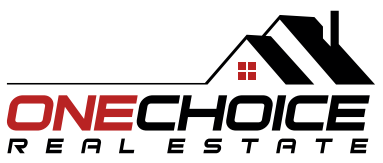Understanding the Escrow Process in California Home Sales
Selling a home in California involves multiple steps, and one of the most crucial is the escrow process. Escrow serves as a safeguard for both buyers and sellers, ensuring that all conditions of the sale are met before ownership officially transfers. Understanding the escrow timeline and what to expect at each stage can help sellers navigate this process with confidence and avoid unnecessary delays.
What is Escrow?
Escrow is a neutral third-party process that holds funds and documents until all contractual obligations are met in a real estate transaction. The escrow company ensures that the buyer, seller, and lender fulfill their respective responsibilities before closing the sale.
The Escrow Timeline for California Home Sales
While the timeline for escrow can vary based on specific transactions, the process typically lasts 30 to 45 days from opening to closing. Below is a step-by-step breakdown of what sellers can expect.
1. Opening Escrow (Day 1-5)
- Once the purchase agreement is signed, the buyer and seller select an escrow company to facilitate the transaction.
- The buyer deposits earnest money (typically 1-3% of the purchase price) into the escrow account as a show of good faith.
- The escrow officer collects necessary documents from both parties and prepares to coordinate the next steps.
2. Contingency Period (Day 5-21)
During this period, the buyer conducts due diligence, ensuring the property meets expectations.
- Home Inspection: The buyer arranges an inspection to check for structural issues or needed repairs.
- Appraisal: If the buyer is financing the purchase, the lender orders an appraisal to verify the home’s value.
- Loan Approval: The buyer works with their lender to finalize mortgage approval.
- Title Search: The escrow company performs a title search to confirm ownership and identify any liens or claims against the property.
Seller’s Role:
- Be responsive to buyer requests for repairs or negotiations.
- Address any title issues that arise.
- Provide all required disclosures and documentation.
3. Contingency Removal (Day 21-30)
- Once all contingencies are satisfied, the buyer submits a contingency removal form to proceed with the sale.
- The buyer deposits any remaining down payment into escrow.
- The seller begins final preparations for moving out of the home.
4. Final Walkthrough and Escrow Closing (Day 30-45)
- The buyer conducts a final walkthrough to confirm the home’s condition matches the agreed terms.
- The escrow company prepares final documents, including the closing statement and deed transfer paperwork.
- The seller signs all closing documents, and the buyer completes the final funding.
- Once all funds are secured and documents recorded with the county, escrow officially closes and the property changes ownership.
What Sellers Should Prepare for Escrow
Required Documents:
- Property title and deed.
- Recent mortgage statements.
- Any necessary disclosures (e.g., natural hazard disclosure, lead-based paint disclosure).
- Homeowners association (HOA) documents, if applicable.
Potential Challenges in Escrow:
- Inspection Issues: If the home inspection reveals major problems, the buyer may request repairs or renegotiate the price.
- Title Concerns: Liens or disputes can delay escrow until resolved.
- Loan Delays: If the buyer experiences financing issues, escrow may be extended or canceled.
Tips for a Smooth Escrow Process
- Be Transparent: Provide all required disclosures upfront to prevent surprises.
- Stay Flexible: Be prepared for negotiations regarding inspection findings or appraisal gaps.
- Communicate Regularly: Maintain open communication with your real estate agent, escrow officer, and the buyer.
Final Thoughts About The Escrow Process In California
Understanding the escrow process in California home sales can help sellers manage expectations and ensure a smooth transaction. By knowing each stage and being proactive in resolving issues, sellers can confidently navigate escrow and successfully close their home sale on time.




